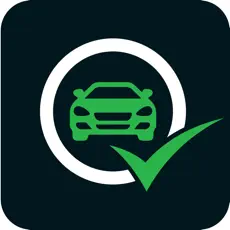If you’ve recently purchased or are planning to buy a Tesla, you might be wondering, “How long does it take to charge a Tesla?” The charging time for a Tesla depends on several factors, including the model, battery size, and the type of charger you use. Whether you’re a new Tesla owner or considering switching to an electric vehicle (EV), understanding how long it takes to charge your Tesla will help you plan your daily routine and long trips more effectively.
In this guide, we’ll cover everything you need to know about Tesla charging times, from the basics of charging options to tips for maximizing efficiency.
Understanding Tesla Charging Basics
Tesla offers a variety of charging options, and knowing the differences will help you choose the best one for your needs. The charging time can vary significantly depending on the method you use:
1. Level 1 Charging (120V Outlet)
- What it is: Level 1 charging uses a standard household outlet (120V).
- Charging Time: It can take 24–72 hours to fully charge a Tesla, depending on the battery size and the car’s current charge level.
- Best For: Overnight charging if you don’t drive long distances daily.
While Level 1 is the slowest method, it’s the most convenient if you don’t have access to a 240V outlet.
2. Level 2 Charging (240V Outlet)
- What it is: Level 2 charging requires a 240V outlet, often installed at home or available at public charging stations.
- Charging Time: You can expect a full charge in 8–12 hours.
- Best For: Daily use, especially if you have a short commute or need to charge overnight.
This method offers a good balance of speed and convenience for everyday driving.
3. DC Fast Charging (Supercharger Network)
- What it is: Tesla’s Supercharger Network is a high-speed charging system that can charge your Tesla quickly.
- Charging Time: You can gain up to 200 miles of range in just 15–30 minutes.
- Best For: Long road trips or when you need a quick charge during a busy day.
Superchargers are located along highways and in urban areas, making them perfect for long-distance travel.
Charging Times for Different Tesla Models
Tesla offers several models, each with different battery capacities and charging capabilities. Here’s a breakdown of the approximate charging times:
| Tesla Model | Battery Capacity | Level 1 (120V) | Level 2 (240V) | Supercharger (DC Fast Charge) |
|---|---|---|---|---|
| Model 3 Standard Range | 54 kWh | 48–72 hours | 8–10 hours | 30–45 minutes |
| Model 3 Long Range | 82 kWh | 72+ hours | 10–12 hours | 45–60 minutes |
| Model Y | 75–82 kWh | 60–80 hours | 10–12 hours | 45–60 minutes |
| Model S | 100 kWh | 80–100 hours | 12–15 hours | 30–40 minutes |
| Model X | 100 kWh | 80–100 hours | 12–15 hours | 30–40 minutes |
Note: These times may vary based on factors like battery condition, charger efficiency, and environmental conditions.
Factors Affecting Charging Speed
Several factors can influence how quickly your Tesla charges:
1. Charger Type
- DC Fast Chargers (Superchargers) are much faster than Level 1 or Level 2 chargers.
- Level 2 chargers are faster than standard household outlets but slower than Superchargers.
2. Battery Capacity
- Larger batteries (like in the Model S or Model X) take longer to charge, especially with slower chargers.
3. State of Charge (SOC)
- Charging speed slows down as the battery approaches full capacity.
- The first 80% of charging is faster, while the last 20% takes longer to protect the battery.
4. Temperature
- Cold weather can slow down charging due to battery chemistry changes.
- Warmer temperatures generally improve charging efficiency.
5. Vehicle Settings
- Some Teslas allow you to adjust charging limits and speed through the car’s touchscreen.
Practical Tips for Efficient Charging
To get the most out of your Tesla’s charging capabilities, here are some practical tips:
- Charge During Off-Peak Hours:
- Many utility companies offer lower rates during off-peak hours.
- Charging at night can save you money on electricity costs.
- Avoid Frequent Supercharging:
- While convenient, frequent use of Superchargers may reduce battery lifespan over time.
- Use Level 2 charging for daily needs and reserve Supercharging for long trips.
- Keep Your Battery Between 20–80%:
- This helps maintain battery health and longevity.
- Charging to 100% is only recommended for long trips.
- Use Tesla’s Trip Planner:
- This feature helps you find the fastest charging routes for road trips.
- It automatically includes Supercharger stops along your journey.
- Regular Software Updates:
- Tesla frequently releases software updates that improve charging performance and efficiency.
- Keep your car’s software up to date for the latest enhancements.
Check Your Tesla’s Vehicle History with Vinautochecker
If you’re considering buying a used Tesla, it’s important to verify its history before making a purchase. This is where Vinautochecker comes in.
At Vinautochecker, you can check a Tesla’s vehicle history for free, including:
- Accident reports
- Title status
- Odometer readings
- Service history
A detailed vehicle history report can help you make an informed decision and avoid potential issues with a used Tesla.
Final Thoughts
Charging your Tesla doesn’t have to be complicated. Whether you’re using a standard outlet, a home charging station, or a Supercharger, understanding your vehicle’s charging needs will help you charge efficiently.
For those buying a used Tesla, don’t forget to check the vehicle’s history with Vinautochecker. Knowing the car’s background can save you from unexpected surprises.
If you’re new to EVs, Tesla’s charging network and advanced features make the transition smooth and hassle-free. Happy driving!
